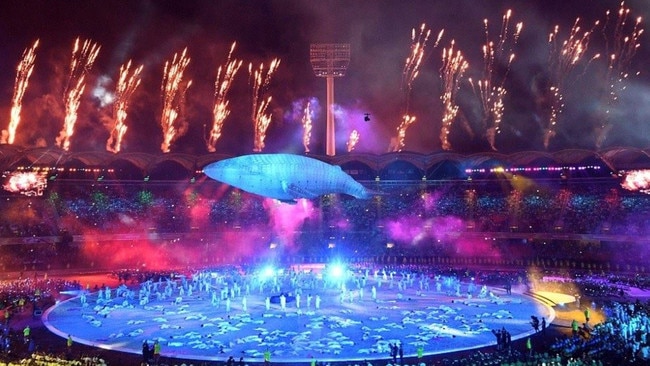Editorial: Urgency at halfway point between Commonwealth and Olympic Games
The time between today and the Brisbane Olympics is the same as that since the Gold Coast Commonwealth Games, writes the editor.

Opinion
Don't miss out on the headlines from Opinion. Followed categories will be added to My News.
The time between today and the 2032 Brisbane Olympic Games is the same as between now and the 2018 Gold Coast Commonwealth Games. Yep, that countdown clock is well and truly ticking.
And as International Olympic Committee president Thomas Bach told us exclusively on Monday, it must be full speed ahead from today – as tomorrow is exactly seven years and two months until the Opening Ceremony at the yet-to-be built stadium at Victoria Park.
Mr Bach insisted – diplomatically – in that interview that he was “very happy” with the progress so far.
But the reality of the situation was raised in a welcome moment of candour by Lord Mayor Adrian Schrinner in a speech on Tuesday night at a reception for the visiting Games dignitaries. He raised what he described as the elephant in the room – the almost five years of delays to venue planning. But Mr Schrinner assured those present of his confidence that those days of division and dillydallying are over.
However, there remains one big stumbling block – that the federal government has not yet agreed with the venues masterplan cooked up by the state government.
The point of contention is that the feds are not yet convinced that the private sector can deliver the new inner-city indoor arena across the road from the Gabba by 2032. As a result, they remain committed to funding it themselves via the bulk of their 50 per cent contribution to the $7bn state and federal funding package for venues.
It was surely no coincidence that Deputy Premier and Infrastructure Minister Jarrod Bleijie chose this week to launch the formal market engagement process for the Gabba precinct. Until the feds agree to decouple their funding from the arena, there is a massive $2.5bn hole in the state’s venues plan. Proving through this market engagement process that the private sector will actually be able to deliver the arena is likely to be the demand the feds have given to the state before they will agree to support what has been proposed in the venues masterplan.
The good news is that what has been proposed has done its job of winning back public support for the Olympic and Paralympic Games after those four wasted years when politicians put themselves and their politics ahead of the opportunity gifted to us by the IOC.
Queenslanders now support the Games, and can see the legacy opportunities – if done right. It is therefore the perfect time for the Brisbane 2032 organisers to invite – as they do today – all Australians to contribute their thoughts to the development of the overarching Games vision, via a public survey.
This Games vision is more than a feel-good statement. As Organising Committee president Andrew Liveris explains, it will guide every aspect of Games planning. We urge all readers to take the time to add their voice to the survey.
We also draw your attention to the comments made about our home by our guests this week from the IOC – and particularly those from its incoming president Kirsty Coventry. She makes a point of saying that what stands out to her when she visits is the warmth of our welcome, and our openness.
She says: “That’s really unique. Brisbane is growing so rapidly … but it still feels small, and it still feels like a home town. People want to feel like they’re home away from home – you guys do that so well.”
How nice. And yes, we can’t wait to welcome the world to Brisbane.
PROOF BUYBACKS WORK
Many South East Queenslanders will remember Cyclone Alfred as being all huff and no puff.
The first tropical cyclone to hit the region in more than 50 years caused serious damage on the Gold Coast and local flooding elsewhere, but the region dodged a bullet in terms of overall impact.
But the fact is that we might not be so lucky next time, which is why the Brisbane City Council report into the cyclone by former governor and Supreme Court chief justice Paul de Jersey is so important.
And one of the key take-outs from the report is the success of buyback schemes for homes in disaster-prone areas.
Mr de Jersey found that of the 405 properties bought by council between 2006 and 2016, and another state and federal government scheme set up after the 2022 floods, 72 per cent would have flooded again.
That is 292 families who did not lose possessions, or were forced to evacuate, or had to put in an insurance claim to rebuild after their house was declared unlivable.
When you consider that 368 homes in the Brisbane Council area had water through them as a result of Alfred, the buybacks had a significant impact.
Lord Mayor Adrian Schrinner has written to the Premier and Prime Minister on the need to reactivate a buyback program – the figures back up his call. While a buyback isn’t cheap, neither is the cost of doing nothing.
Responsibility for election comment is taken by Chris Jones, corner of Mayne Rd & Campbell St, Bowen Hills, Qld 4006. Printed and published by NEWSQUEENSLAND (ACN 009 661 778). Contact details here




